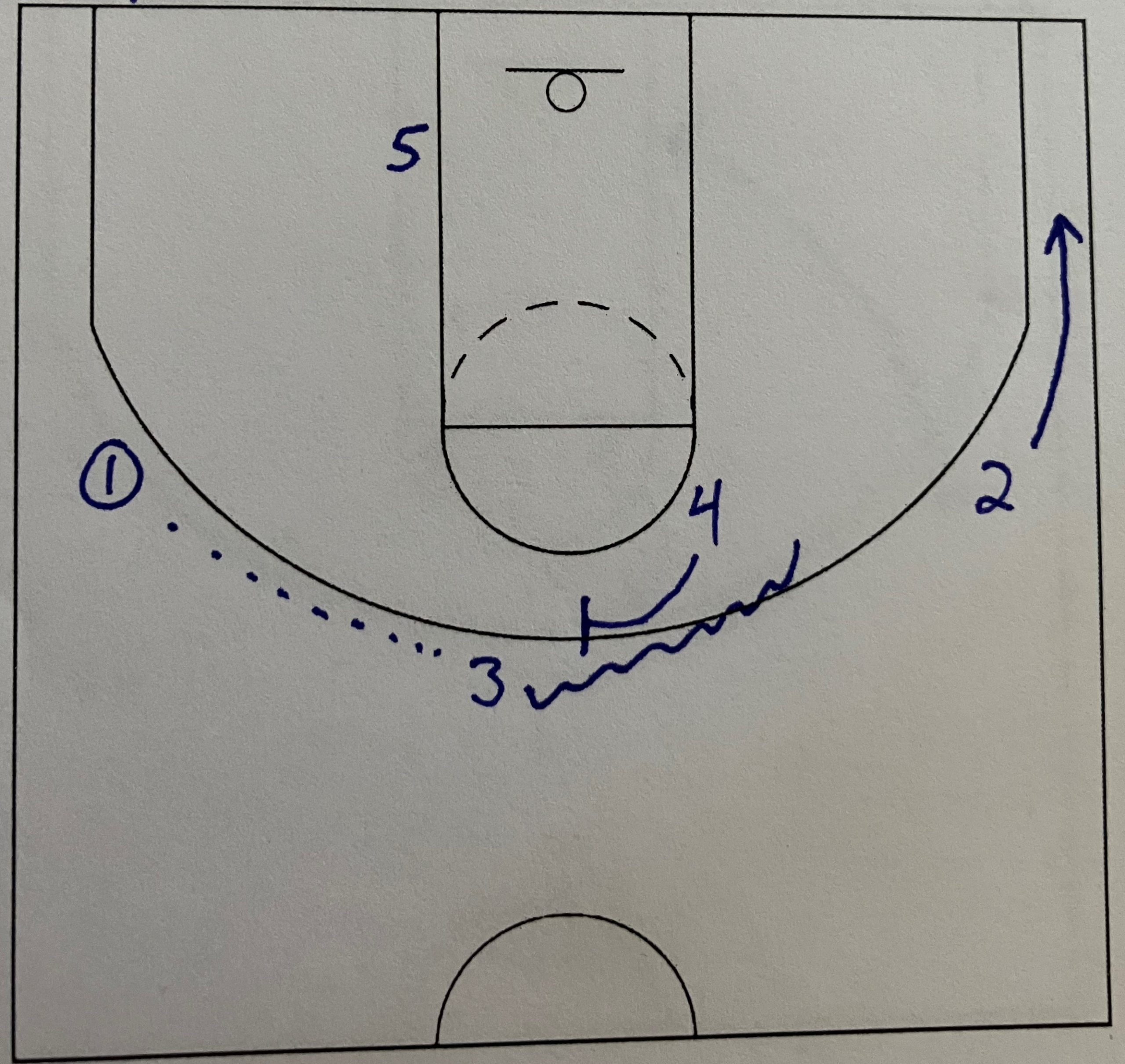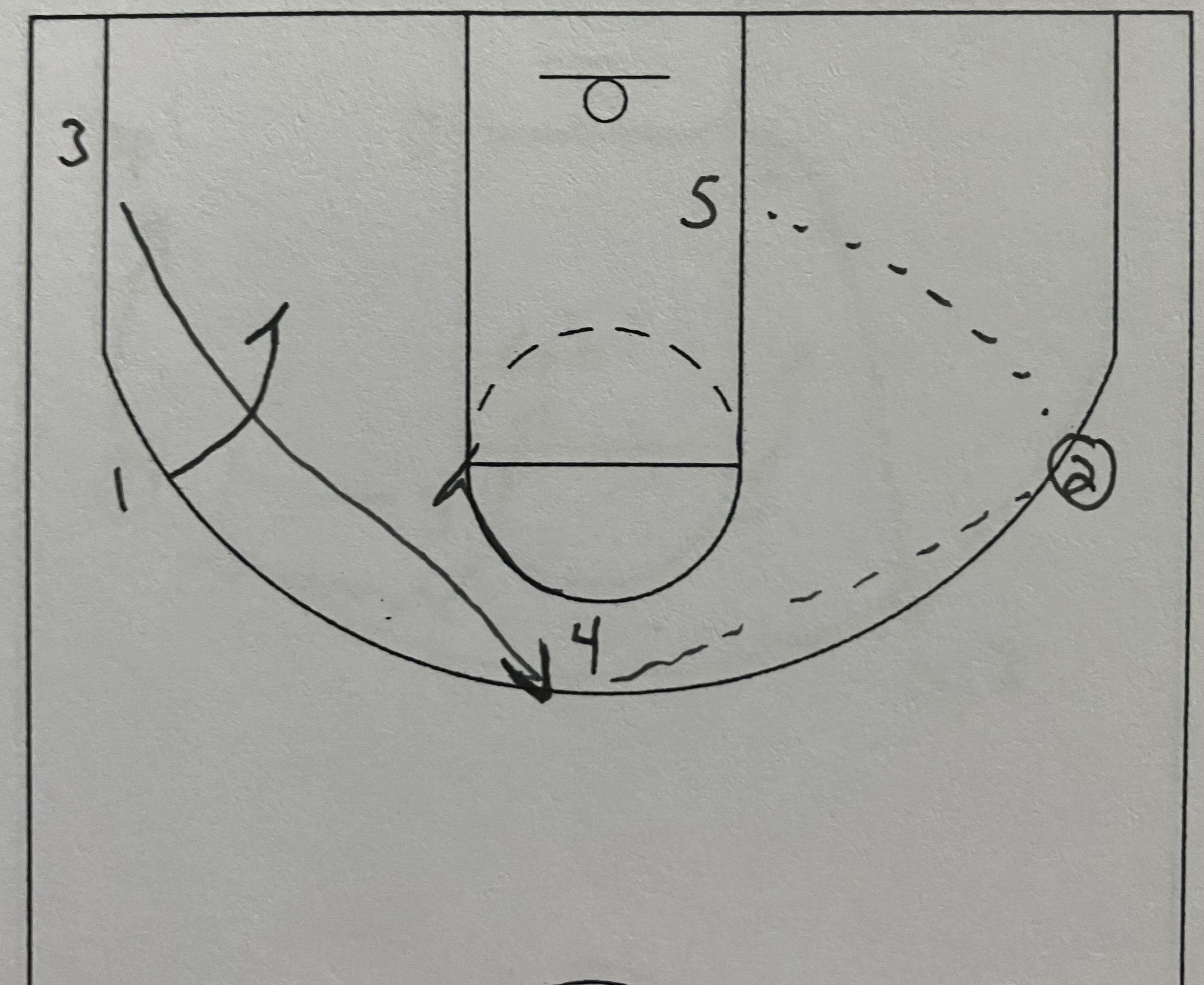Quick actions can be very hard to guard. One of the tools that offenses can do to beat a defense is to give them more actions in succession then the defense can react too. When one action flows straight into a 2nd action and 3rd action then each mistake by the defense or each slow rotation is amplified even more. Small mistakes can lead to the offense having a large amount of space to punish the defense.
This is another screen the screener action that puts pressure on the defense to decide if to help and how much to help on the initial screen. Too little help can lead to an easier layup. Too much help and the defense is not able to defend the 2nd screen. And an offense that is able to move quickly through the screen the screener action without losing the action makes it very difficult for the defense to defend.
The offense needs to move quickly from the 1st screen to the 2nd screen to the 3rd screen to keep maximum pressure on the defense. But it can not be so quick that the offense is running through the screens and not forcing the defense to properly defend each action.
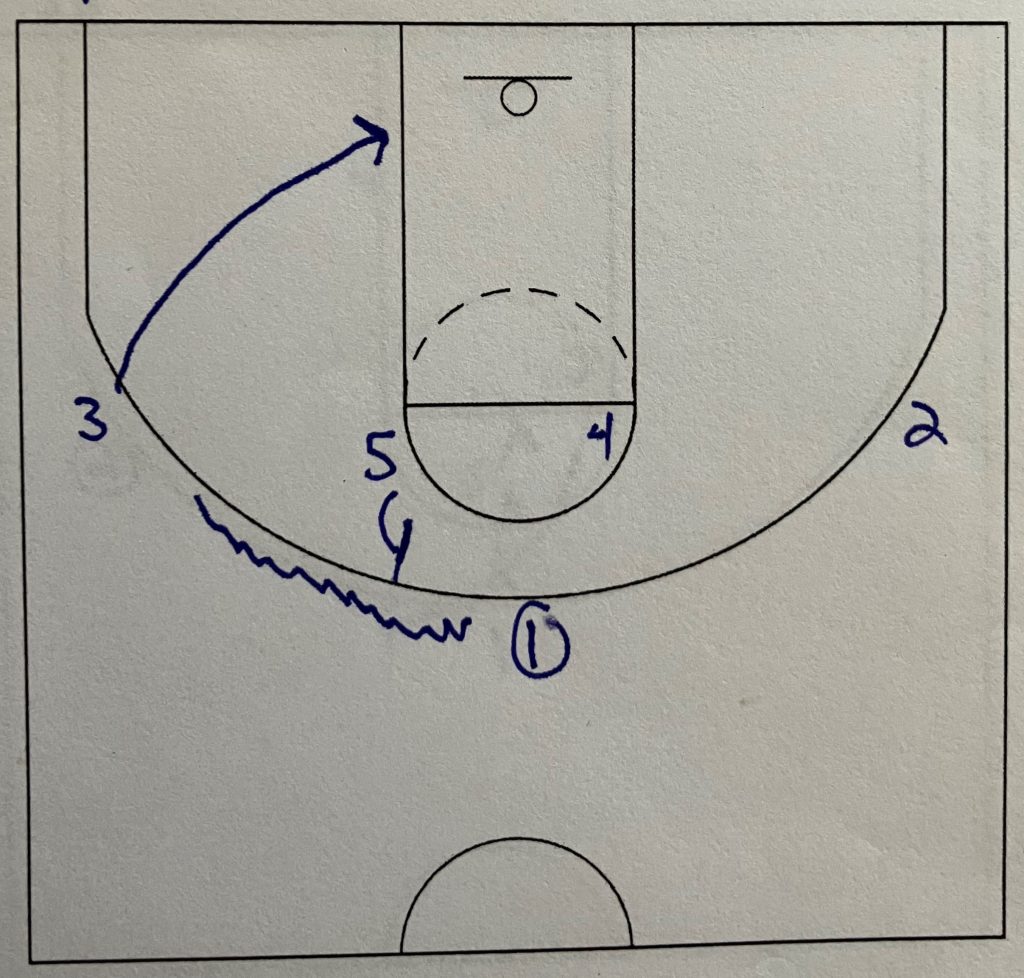
The quick hitter starts in a 1-4 high setup. This can go in either direction but I have it in the diagram moving so the center(5) is the one ending up in a post isolation.
The center(5) and big(4) both step up off the elbow for a potential ball screen. The point(1) decides which way to go to start the play. In the diagram, the point(1) dribbles to the left using the center(5)’s screen. As the point(1) moves left, the wing on that side cuts to the block. In the diagram, the forward(3) cuts hard to the basket for a possible backdoor but that is very unlikely to come open.
The point(1) is trying to come off of the screen and if possible turn the corner and get to the rim coming in right behind the cutting forward(3). This is going be hard because the front of the basket will be clogged with the forward(3) and their defender.
If the point(1) cannot turn the corner and get to the basket, they will keep their dribble and back out to the wing.
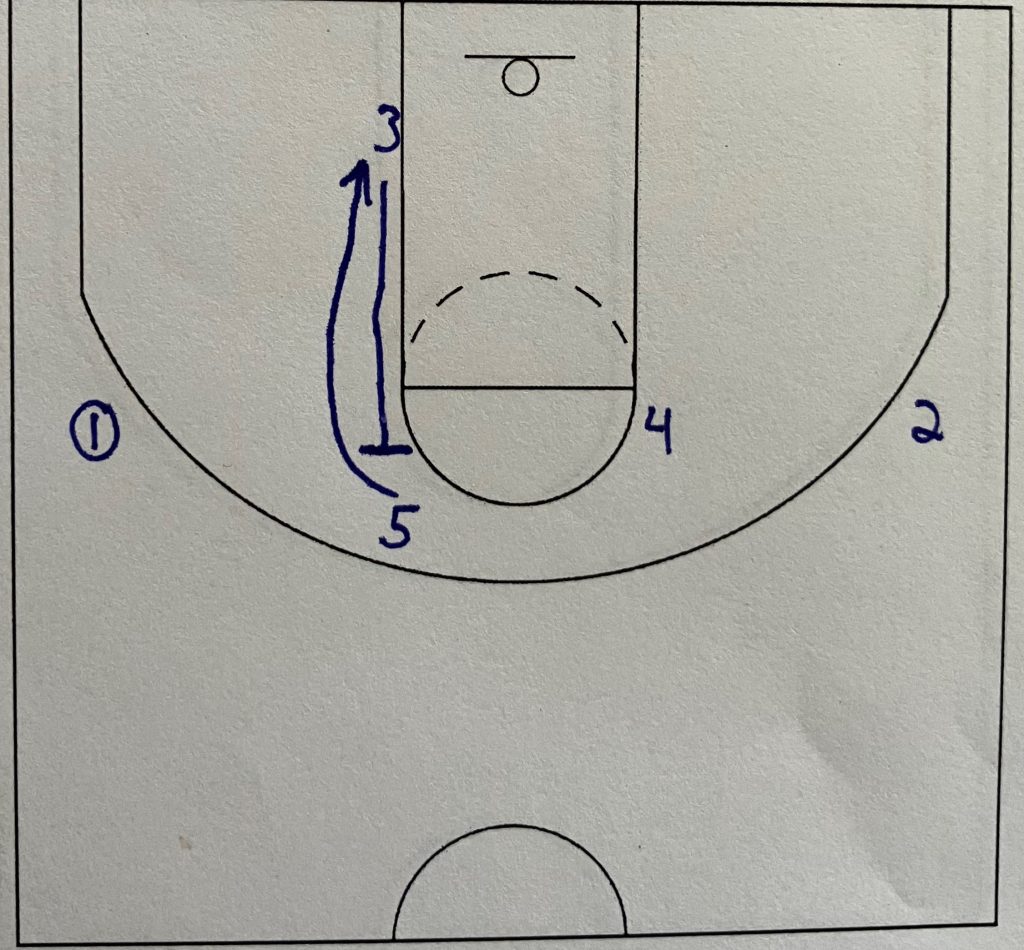
As the forward(3) reaches the block, they are turning up the lane to set a back screen for the center(5). As the forward(3) comes up the lane, the point(1) has one more chance to beat their defender off the dribble. The center(5) is using the screen by the forward(3) to try and get open going down the lane line. If the cut is not open, then the center(5) will have a second to post up and get an entry pass from the point(1). If the point(1) does not get the post feed on either the cut or post, then the pass is going to come around to the forward(3) coming off of the back screen.
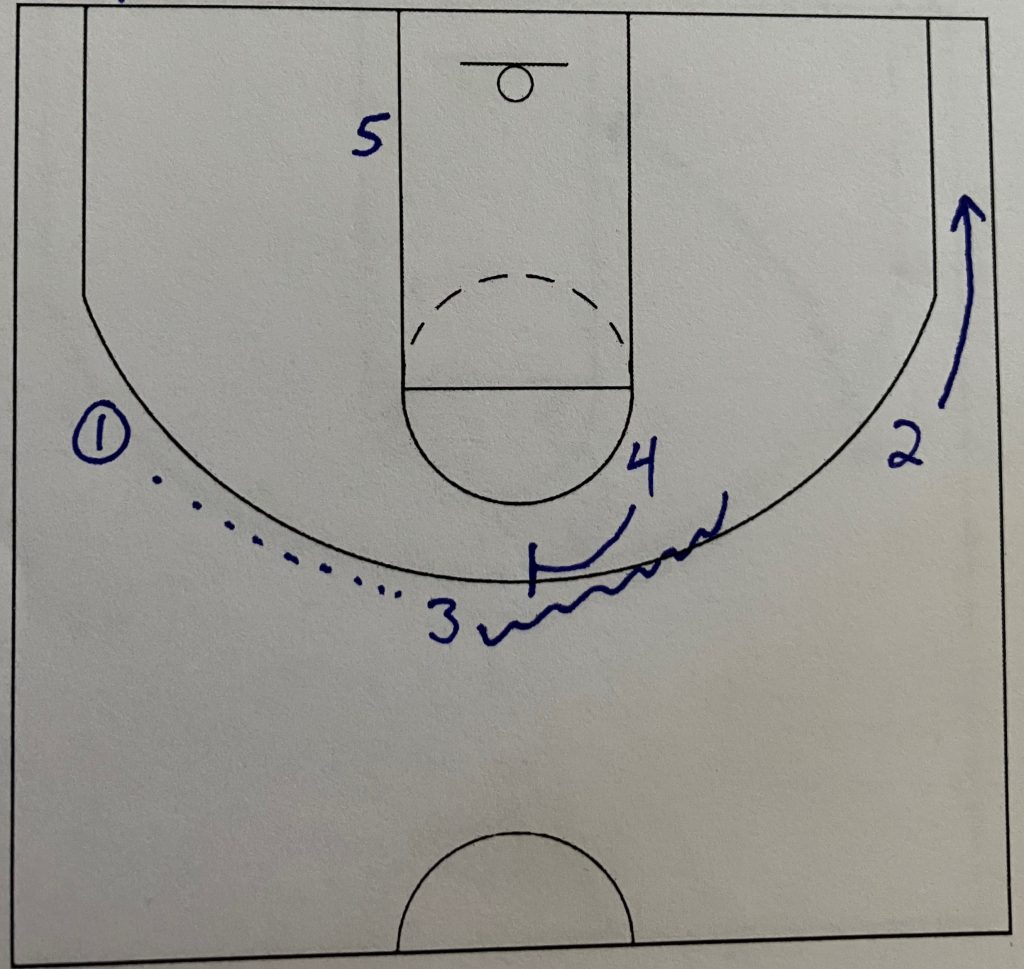
And now the quick hitter is using a screen the screener action. The forward(3) sets the backscreen for the center(5). After the screen, the forward(3) steps up to the top of the key. After receiving the pass from the point(1), the forward(3) is using a ball screen by the big(4) to attack the backside of the defense.
If the forward(3)’s defender helps the backscreen then they will be slow closing back out making the ball screen even more effective. As the forward(3) comes off the ball screen they are reading the guard(2)’s defender. If the guard(2)’s defender stays out then the forward(3) is attacking the basket. If the defender steps over to help on the drive then it is a kick out 3-point shot for the guard(2).
The center(5) is still there for the dump pass on the drive as well. And the big(4) is running a pick and pop just in case the defense runs a drop coverage on the ball screen.
All of this action is taking place after there has already been a ball screen and back screen. There is a lot of actions taking place in a very short period of time. This puts a lot of pressure on the defense to defend multiple actions.
A switching defense that switches all screens have an easier time defending this but this does immediately put a smaller defender on the center(5) isolated in the post. A defense that fights through all screens should be slower on the recovery at the top giving the 2nd ball screen at the end of the play the ability to create a lot of open space for the forward(3) to attack and score.
I like pairing this quick hitter with Quick Hitter #10 to give the defense multiple looks out of the same initial setup and action. This makes these two plays even harder to guard.

